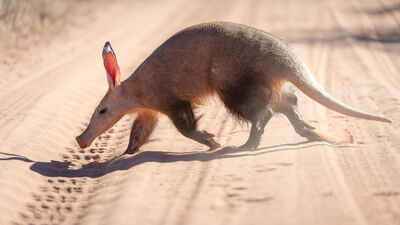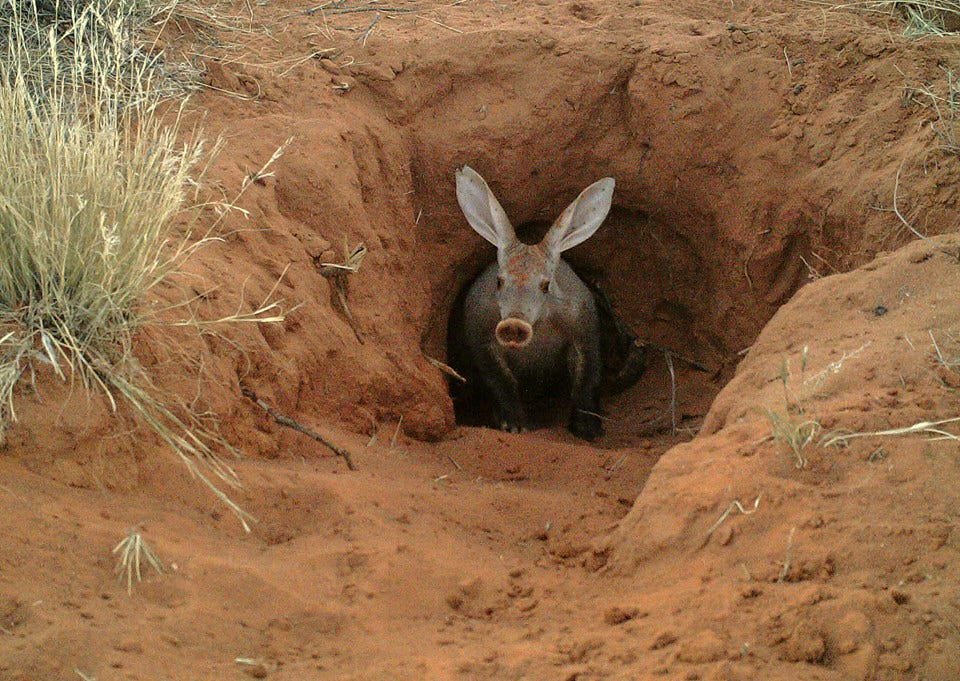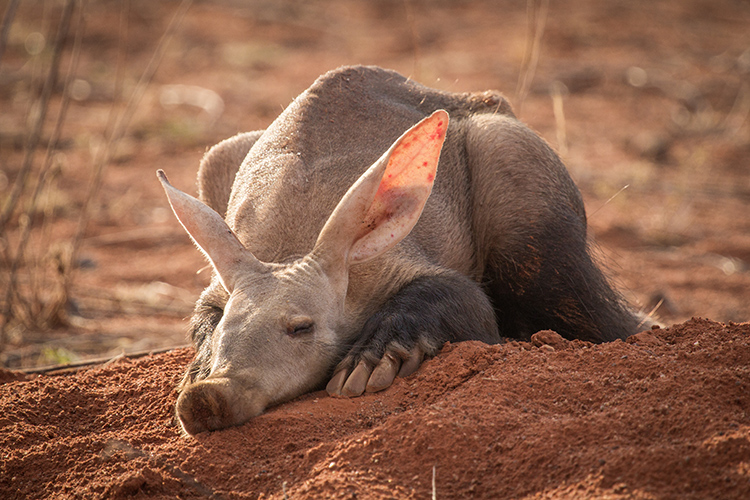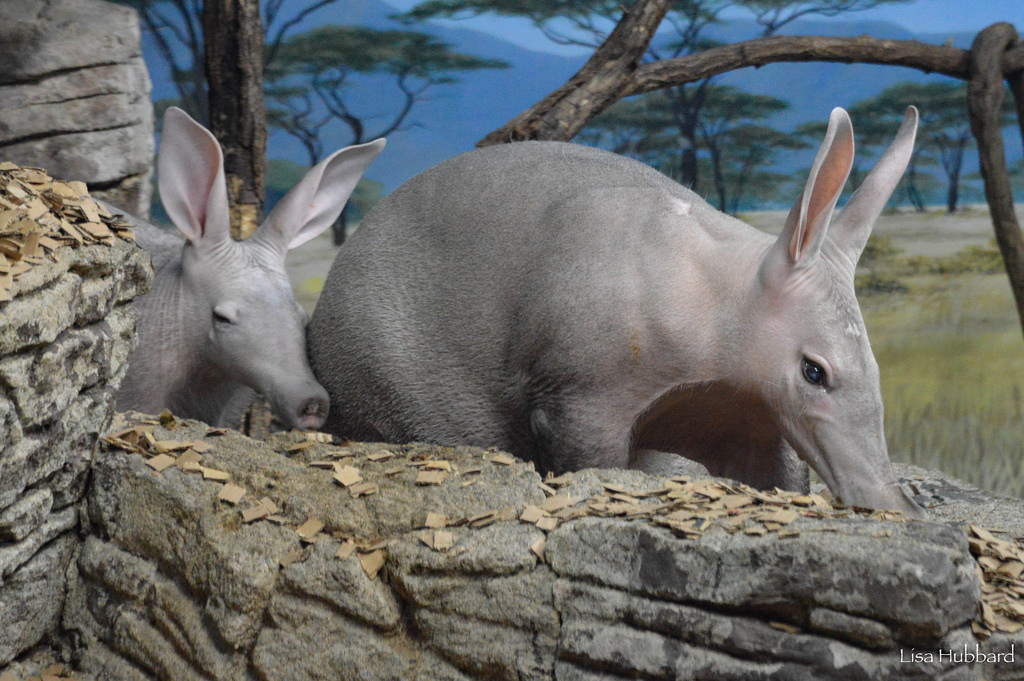
The aardvark, an often-overlooked and enigmatic creature, is one of Africa’s most unique mammals. Despite its distinctive appearance and interesting behavior, the aardvark remains largely unknown to many people outside of wildlife circles. Characterized by its long ears, pig-like snout, and burrowing lifestyle, the aardvark plays an essential role in its ecosystem. For those who are curious about this unusual animal, it’s time to delve deeper into the five fascinating facts about the aardvark that make it truly extraordinary.
1. The Aardvark’s Unique Physical Appearance

One of the first things that stand out about the aardvark is its highly distinctive physical appearance, which has earned it a spot among the more curious animals in the animal kingdom. The name “aardvark” is derived from the Afrikaans and Dutch words for “earth pig” or “ground pig,” which makes sense given the animal’s pig-like body and behavior. However, the aardvark is not related to pigs at all, but rather belongs to the order Tubulidentata, which is unique to this species alone.
The most striking feature of the aardvark is its elongated snout, which is highly specialized for sniffing out food underground. This long, sensitive snout is equipped with large nostrils that can be opened wide to sniff out ants and termites, the aardvark’s primary food sources. Aardvarks are also easily identifiable by their large, rabbit-like ears, which can be over 8 inches long.
These ears are not only visually striking but also play a crucial role in the aardvark’s survival, allowing it to detect predators such as lions and leopards. The aardvark’s body is robust and covered in coarse, bristly fur. It also possesses strong, clawed front feet adapted to digging, since it lives in a burrow. Its long, thick tail resembles that of a kangaroo, and it’s often used for balance when the aardvark is digging.
These physical adaptations are ideal for the aardvark’s nocturnal habits and burrowing behavior, which we’ll explore in further detail.
2. Aardvarks Are Expert Burrowers

A defining feature of the aardvark’s lifestyle is its exceptional burrowing ability. Aardvarks spend a significant portion of their lives digging extensive underground tunnels, where they sleep during the day and seek refuge from predators and the harsh daytime heat. They are often very long, up to 30 feet long, and some are quite extensive multichambered with escape shafts. Aardvarks dig using their powerful forelimbs, which are equipped with strong claws.
Their digging speed is astonishing, and they can make big and deep burrows in a few minutes. The aardvark’s claws are adapted for digging into hard soil, and their long claws and muscular forelimbs allow them to move dirt quickly. While the aardvark is digging, it uses its large, sensitive ears to listen for any approaching predators or dangers, which can include lions, hyenas, or wild dogs.
They are not only used to protect themselves against predators and the burning sun, but also prompt refuge to other species. For example, meerkats and other small animals sometimes make use of abandoned aardvark burrows as their homes. In many ways, the aardvark’s burrowing activities benefit multiple species within the ecosystem, helping to increase biodiversity and contributing to a dynamic and healthy environment.
The digging behavior of the aardvark is also essential for its diet. While burrowing, the aardvark often disturbs ant and termite colonies, making it easier for the animal to access its primary food sources. This behavior highlights the aardvark’s role as both a predator and an ecosystem engineer, shaping its environment in ways that go beyond just finding food and shelter.
3. Aardvarks Have a Specialized Diet

When it comes to food, the aardvark is a true specialist. The aardvark is primarily insectivorous, with a diet consisting mainly of ants and termites. It has a strong sense of smell and highly developed digging ability to find ant and termite mounds underground. The aardvark’s long, sticky tongue, which can extend up to 12 inches, plays a vital role in its feeding behavior.
The aardvark’s tongue is uniquely adapted for this type of diet. The gel covers it with a sticky substance which enables it to trap the ants, termites, and other small insects in the nests effectively. The aardvark can flick its tongue in and out of the nest at incredible speed, allowing it to consume large amounts of insects in a short period. Some aardvarks can consume up to 50,000 ants or termites in a single night.
The aardvark has a special set of molar-like teeth that help it grind up the insects, which are swallowed whole. Interestingly, the aardvark’s teeth have no enamel, and they continue to grow throughout its life, similar to the teeth of rodents. Despite its specialized diet, the aardvark is a relatively low-maintenance animal when it comes to its nutritional needs. It is able to keep itself in food by days without food, grazing on the depots of ants and termites in its burrow and locality. The aardvark’s high metabolism and ability to consume large quantities of insects allow it to thrive in the harsh conditions of the African savannah, where food can be scarce at times.
This diet also makes the aardvark a very important species in its ecosystem. By consuming vast quantities of ants and termites, aardvarks help regulate the populations of these insects, which in turn helps maintain the balance of other species in the food chain. Their feeding habits also avert excess of these insects which in turn would cause vegetation destruction and lead to the overall ecosystem.
4. Aardvarks Are Solitary and Nocturnal Creatures

Unlike many social mammals, the aardvark is a solitary animal. Aardvarks are primarily nocturnal, and they spend the majority of their lives alone, only interacting with other aardvarks during the mating season. These animals are nocturnal and therefore tend to move during the night because they evolved to survive in hot and arid conditions such as savannas and grasslands.
Aardvarks use their highly sensitive sense of smell and hearing to navigate the darkness, allowing them to detect the presence of predators or prey. The huge ears that are very effective at picking up on frequencies of sound play a very significant role in their ability to survive in the wild. This nocturnal behavior allows aardvarks to avoid the most dangerous predators that are active during the day, such as large carnivores like lions and hyenas.
They are nocturnal and solitary which add to their elusive status. Aardvarks are shy creatures that tend to avoid human contact and remain well-hidden in their burrows. Their nocturnal life also helps them avoid predators and intrusion by other living beings. In addition to being solitary, aardvarks are also highly territorial. As part of a territory marking mechanism, they use their burrows and can grow very aggressive when their space is infringed.
Aardvarks communicate through scent-marking and vocalizations, although they are generally silent creatures. The solitary and territorial lifestyle of the aardvark is a key factor in its success as a species, allowing it to maintain control over its environment and avoid unnecessary risks.
5. Aardvarks Are a Keystone Species

A fascinating fact about the aardvark is its role as a “keystone species” in its ecosystem. As we have already seen, the aardvark’s digging behavior creates burrows that are used by other animals for shelter, while its consumption of ants and termites helps regulate the populations of these insects. Beyond these direct impacts, aardvarks contribute to their ecosystems in less obvious ways. By digging extensive burrows, aardvarks help to aerate the soil, which can improve its fertility.
They also create water channels during their digging which will store water, which is beneficial to plants and other living organisms within the region. The aardvark’s activities play a crucial role in the health of the soil, ensuring that plants receive the nutrients they need to thrive. Aardvarks also serve as an important food source for larger predators, including lions and leopards.
The burrows they make form the shelter of numerous smaller animals such as small mammals, birds, and reptiles. As a result, the aardvark’s burrows contribute to the overall biodiversity of its habitat by providing homes and food sources for a wide range of species. These contributions to the ecosystem highlight the aardvark’s importance far beyond its own survival. Without the aardvark’s burrowing and feeding behaviors, the delicate balance of the savannah or grassland ecosystem would likely be disrupted.
Conclusion
The aardvark may be a mysterious and somewhat overlooked animal, but the fascinating facts about the aardvark paint a picture of a truly remarkable species. From its unique appearance and burrowing skills to its specialized diet and role as a solitary nocturnal creature, the aardvark is an animal perfectly suited to its environment. Most importantly, the aardvark’s contributions to its ecosystem as a keystone species make it an essential part of the African landscape. As we learn more about this intriguing animal, it becomes clear that the aardvark is far more than just an “earth pig” — it is a vital and highly specialized creature that plays an indispensable role in the natural world.






